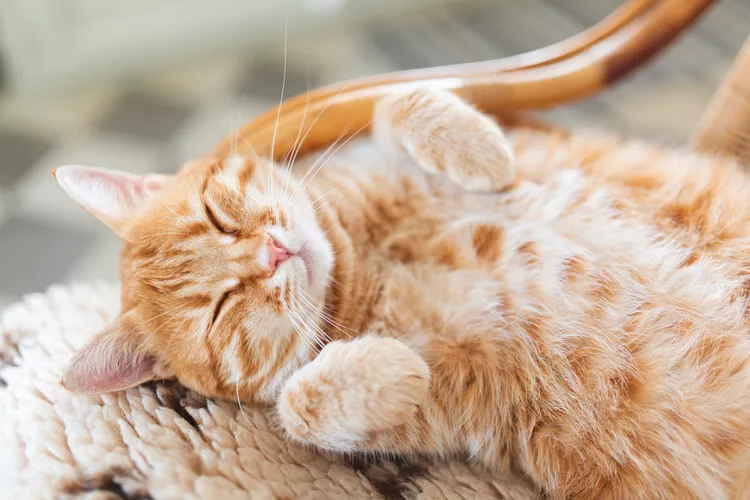Is My Cat Happy?

As concerned "cat parents," people want happy cats, and yet often they question whether their cat is happy. Although every cat is an individual and, like humans, may show happiness in different ways, there are some pretty universal happy cat clues. Many signs let you know if your kitty feels joy.
Vocal Clues
Cats can literally "say" they're happy. Vocal kitties tell you all about it and engage in long drawn out conversations. Generally, the higher-pitched sounds are "happy" while lower-pitched can have a bit of frustration and be more demanding. Quiet cats may express happiness with silence, and vocalize more to express unhappiness. Confusing, yes! But that's why people love their enigmatic felines! While purrs aren't always happy, for the most part, they are an indication of feline contentment or even bliss. Kitty chortles and trills—that "prrrrupttt!" sound many cats make, is a very good indication of cat happiness.
Body Language
There are many eye, ear, fur, and body positions that indicate upset cat feelings or contentment. For example, a relaxed, contented cat may rest with front paws tucked under, ears forward, eyelids "sleepy" perhaps at half-mast. The eye-blink in response to your gaze from across the room is a happy cat gesture. Sudden dilation of the eyes may indicate arousal-happiness in response to a full food bowl, for example, but may also be seen with arousal-distress. Happy cats hold whiskers slightly forward and fur smooth with tail relaxed. A joyful, involved cat's tail talk stands straight up with just the tip crooked in a "howdy" greeting to people and other pets the cat considers friends.
Engaged and Confident
A happy cat shows interest in its environment. It may be the "supervisor cat" with a paw into everything new around the house. Or it may simply watch calmly from a distance. While many cats have a built-in stranger danger default, the happy cat reacts with caution rather than fear. Confident kitties have the highest happiness quotient.
Play
Healthy, well-socialized kittens play nonstop and simply don't know any better than to be happy. Playing is a terrific indication of happiness. As cats mature and progress into middle and old age, play activity naturally diminishes but often remains present at some level. Any amount of play, from rollicking races and kitty wrestling matches to sedate paw-patting of features (or your leg or face for attention) can indicate feline happiness. Cats play with other critters (and humans) that they like and trust.
Sleep
Cats may sleep more when sick or depressed, but their sleep location preferences can be an indication of happiness. Sleeping with other cats, and especially seeking them out, indicates happy relationships with the chosen nap-buddies. If your cat chooses you as a bed-mate, rejoice! That means kitty trusts you—distrust breeds unhappiness, after all.
Grooming
Cats who feel good keep themselves well-groomed. Poor grooming is a sign of unhappiness, illness, or injury, so when your kitty looks spiffy, that's a positive indication it feels good. Grooming other cats or licking the owner (as with mutual sleeping) also shows trust and a positive relationship. Cats happy with each other may groom one another. However, since kitties are individuals, not all cats feel the urge to groom others.
Eating
Happy cats have healthy appetites. Oh, they may bluff and train owners into providing special treats or food. But in many ways, this sort of manipulation is just a sign of how engaged many kitties are in promoting their happiness.